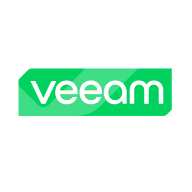

NetApp SnapCenter and Veeam Data Platform compete in the data backup and recovery market. Veeam Data Platform appears to have the upper hand due to its broader features for VMware environments and strong backup and replication capabilities.
Features: SnapCenter is known for fast backup and recovery processes, centralized management, and seamless integration with NetApp storage systems. It simplifies interface operations for data recovery and snapshot management. Veeam Data Platform delivers instant recovery, file-level restoration, and reliable management of complex backup operations. It stands out for ease of use in VMware environments and versatility in replication capabilities, ensuring flexible cloud and on-premise deployments.
Room for Improvement: SnapCenter could improve its support for non-NetApp storage solutions, enhance replication features, and provide more detailed reporting. Users also seek improved dashboard views and faster plugin developments. Veeam Data Platform should enhance its physical server support, licensing model simplicity, and offer better cloud integration and scalability options. Challenges include setup process complexity, high licensing costs, and integration with non-Microsoft environments.
Ease of Deployment and Customer Service: SnapCenter is mainly deployed in on-premises or hybrid environments with mixed experiences in customer support. Initial support levels encounter challenges before reaching experienced technicians. Veeam Data Platform enjoys a solid customer service reputation, with straightforward deployment in cloud and on-premises setups. Users appreciate the responsiveness and knowledge of Veeam's technical support.
Pricing and ROI: SnapCenter offers a cost-effective option for NetApp hardware users by bundling its services, facilitating savings on backup times and licensing fees. Veeam Data Platform, while robust in features, is criticized for high licensing costs and setup complexity. However, its pricing is often seen as justified given the capabilities and reliability it offers in minimizing operational disruptions and strengthening data protection strategies.
The support from NetApp is very good, and I would rate it as ten points.
The technical support from NetApp is excellent.
I would rate their technical support a 10 out of 10.
Most cases are handled perfectly.
The escalation from first, second to third tier is sometimes very long-lasting, but the resolve rate is quite high.
Integration with other vendors is also seamless.
In order to scale Veeam Data Platform, we have to pay a lot more money.
Even though we have used multiple products in the private cloud, with NetApp, we haven't found any glitches.
There are no issues with stability in Veeam Data Platform.
It should be more user-friendly and easier for customers to use.
Additional features expected in the next release to make it even better, most parts are on the way, and the AI integration should be improved.
OpenStack is something Veeam Data Platform doesn't support, and they haven't indicated that they will support it in the future.
Compared to IBM, Veeam Data Platform is simpler but brings some challenges with automation in backup and Oracle backup configuration.
The product should be free because it is just software to administrate systems purchased from NetApp, which are already expensive.
I don't consider the price expensive given its importance.
A reduction of 20% in the current cost would make the solution more attractive to clients.
Veeam Data Platform is more expensive than OpenStack because we pay for it in US dollars, while we pay for OpenStack in Egyptian pounds.
The product is very stable and easy to install, which saves a significant amount of time during deployment.
Role-based access control and multi-factor authentication are security features available in NetApp SnapCenter.
The platform is user-friendly, comprehensive, and compatible with numerous market solutions, including virtualization and bare metal servers.
The most important aspect of this platform is data security with immutable data in the storage.
Veeam Data Platform provides me with the most useful features such as application restore, single file restore, backup and replication, and continuous replication.
| Product | Market Share (%) |
|---|---|
| Veeam Data Platform | 11.4% |
| NetApp SnapCenter | 0.7% |
| Other | 87.9% |


| Company Size | Count |
|---|---|
| Small Business | 8 |
| Midsize Enterprise | 9 |
| Large Enterprise | 12 |
| Company Size | Count |
|---|---|
| Small Business | 216 |
| Midsize Enterprise | 99 |
| Large Enterprise | 138 |
Unified, scalable platform for application-consistent data protection and clone management. This software simplifies backup, restore, and clone lifecycle management with application-integrated workflows.
Veeam Data Platform is designed for modern data management, providing secure backups, intelligent data insights, and resilience. It ensures data is protected, recoverable, and manageable across complex environments, supporting business continuity effectively.
Veeam Data Platform stands out with its robust capabilities in data protection, orchestrated recovery, and efficient management. It offers a simple interface while ensuring data security and availability, which is critical for businesses. The platform's compatibility with virtual machines, databases, and applications across VMware, Hyper-V, and cloud environments makes it a versatile choice for backup and disaster recovery strategies. Users gain confidence from its performance, from secure backups to facilitating effective infrastructure monitoring.
What are the key features of Veeam Data Platform?Veeam Data Platform is widely implemented by industries needing robust disaster recovery plans and data management solutions. It is particularly valuable in environments utilizing hybrid cloud solutions, protecting mission-critical workloads, and ensuring business continuity. Businesses leverage its capabilities to safeguard data integrity and facilitate long-term retention through efficient infrastructure management.
We monitor all Backup and Recovery reviews to prevent fraudulent reviews and keep review quality high. We do not post reviews by company employees or direct competitors. We validate each review for authenticity via cross-reference with LinkedIn, and personal follow-up with the reviewer when necessary.